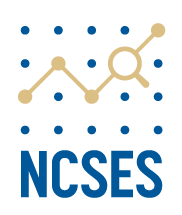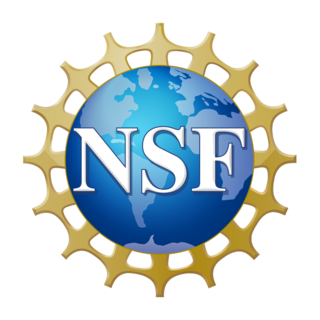
The U.S. National Science Foundation (NSF) is an independent agency of the United States federal government that supports fundamental research and education in all the non-medical fields of science and engineering. Its medical counterpart is the National Institutes of Health. With an annual budget of about $9.9 billion, the NSF funds approximately 25% of all federally supported basic research conducted by the United States' colleges and universities. In some fields, such as mathematics, computer science, economics, and the social sciences, the NSF is the major source of federal backing.

Research and development is the set of innovative activities undertaken by corporations or governments in developing new services or products, and improving existing ones. Research and development constitutes the first stage of development of a potential new service or the production process.

The National Science Board (NSB) of the United States establishes the policies of the National Science Foundation (NSF) within the framework of applicable national policies set forth by the president and the Congress. The NSB also serves as an independent policy advisory body to the president and Congress on science and engineering research and education issues. The board has a statutory obligation to "...render to the President and to the Congress reports on specific, individual policy matters related to science and engineering and education in science engineering, as Congress or the President determines the need for such reports,". All board members are presidential appointees. NSF's director serves as an ex officio 25th member and is appointed by the president and confirmed by the US Senate.

Science, technology, engineering, and mathematics (STEM) is an umbrella term used to group together the distinct but related technical disciplines of science, technology, engineering, and mathematics. The term is typically used in the context of education policy or curriculum choices in schools. It has implications for workforce development, national security concerns, and immigration policy, with regard to admitting foreign students and tech workers.
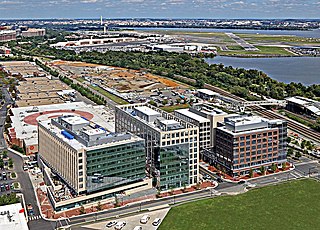
The Institute for Defense Analyses (IDA) is an American non-profit corporation that administers three federally funded research and development centers (FFRDCs) – the Systems and Analyses Center (SAC), the Science and Technology Policy Institute (STPI), and the Center for Communications and Computing (C&C) – to assist the United States government in addressing national security issues, particularly those requiring scientific and technical expertise. It is headquartered in Alexandria, Virginia.
The United States National Academy of Sciences' Board on Science, Technology, and Economic Policy (STEP) is a board of the United States National Academy of Sciences.
The America COMPETES Act was authored by Bart Gordon and signed into law on August 9, 2007, by President George W. Bush. The act aimed to invest in innovation through research and development and improve the competitiveness of the United States.
Federally funded research and development centers (FFRDCs) are public-private partnerships that conduct research and development for the United States Government. Under Federal Acquisition Regulation § 35.017, FFRDCs are operated by universities and corporations to fulfill certain long-term needs of the government that "...cannot be met as effectively by existing in-house or contractor resources." While similar in many ways to University Affiliated Research Centers, FFRDCs are prohibited from competing for work. There are currently 42 FFRDCs, each sponsored by one or more U.S. government departments or agencies.

Subra Suresh is an Indian-born American engineer, materials scientist, and academic leader. He is currently Professor at Large at Brown University and Vannevar Bush Professor of Engineering Emeritus at the Massachusetts Institute of Technology (MIT). He was Dean of the School of Engineering at MIT from 2007 to 2010 before being appointed as Director of the National Science Foundation (NSF) by Barack Obama, where he served from 2010 to 2013. He was the president of Carnegie Mellon University (CMU) from 2013 to 2017. Between 2018 and 2022, he was the fourth President of Singapore's Nanyang Technological University (NTU), where he was also the inaugural Distinguished University Professor.
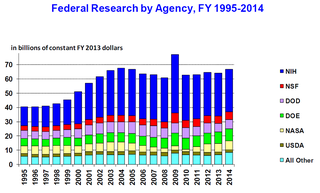
The science policy of the United States is the responsibility of many organizations throughout the federal government. Much of the large-scale policy is made through the legislative budget process of enacting the yearly federal budget, although there are other legislative issues that directly involve science, such as energy policy, climate change, and stem cell research. Further decisions are made by the various federal agencies which spend the funds allocated by Congress, either on in-house research or by granting funds to outside organizations and researchers.
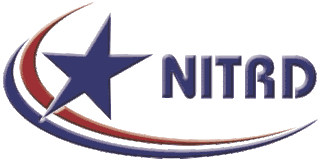
The Networking and Information Technology Research and Development (NITRD) program consists of a group of U.S. federal agencies to research and develop information technology (IT) capabilities to empower Federal missions; support U.S. science, engineering, and technology leadership; and bolster U.S. economic competitiveness.
The Nelson Diversity Surveys (NDS) are a collection of data sets that quantify the representation of women and minorities among professors, by science and engineering discipline, at research universities. They consist of four data sets compiled by Donna Nelson, Professor of Chemistry at the University of Oklahoma during fiscal years (FY) 2002, 2005, 2007, and 2012 through the Diversity in Science Association. These surveys were each complete populations, rather than samples. Consequently, the Surveys quantified characteristics of the faculty which had never been revealed previously, drawing great attention from women and minorities. Furthermore, the Surveys initially came at a time when these underrepresented groups were becoming concerned and vocal about perceived inequities in academia. At the time the surveys were initiated, the MIT Study of 1999, expressing the concerns of women scientists, had just been issued, and underrepresented minority (URM) science faculty noticed URM students increase among PhD recipients without a corresponding increase among recently hired professors. Data sets like the NDS, along with similar research available through the NSF, allowed URM faculty to track the progress of diversity efforts in the STEM fields. As noted by the Women's Institute for Policy Research, progress has been slow for under-represented women in the sciences.

The STEM Education Act of 2014 is a bill that would add computer science to the definition of STEM fields used by the United States federal government in determining grants and education funding. It would open up some training programs to teachers pursuing their master's degrees, not just teachers who had already earned one.
African-American women in computer science were among early pioneers in computing in the United States, and there are notable African-American women working in computer science.
The Science and Technology Policy Institute is a federally funded research and development center located in Washington, D.C. STPI provides objective research and analysis on science and technology policy issues in support of the White House Office of Science and Technology Policy (OSTP), as well as for its sponsor, the National Science Foundation, and other science-performing federal agencies. STPI is administered by the non-profit Institute for Defense Analyses, located in Alexandria, Virginia. As of May 2020, Kristen Kulinowski is the current director of STPI.
The STEM pipeline is a critical infrastructure for fostering the development of future scientists, engineers, and problem solvers. It's the educational and career pathway that guides individuals from early childhood through to advanced research and innovation in STEM-related fields.

Ashanti Johnson is an American geochemist and chemical oceanographer. She is the first African American to earn a doctoral degree in oceanography from Texas A&M University.
According to the National Science Foundation (NSF), women and racial minorities are underrepresented in science, technology, engineering, and mathematics (STEM). Scholars, governments, and scientific organizations from around the world have noted a variety of explanations contributing to this lack of racial diversity, including higher levels of discrimination, implicit bias, microaggressions, chilly climate, lack of role models and mentors, and less academic preparation.

The CHIPS and Science Act is a U.S. federal statute enacted by the 117th United States Congress and signed into law by President Joe Biden on August 9, 2022. The act authorizes roughly $280 billion in new funding to boost domestic research and manufacturing of semiconductors in the United States, for which it appropriates $52.7 billion. The act includes $39 billion in subsidies for chip manufacturing on U.S. soil along with 25% investment tax credits for costs of manufacturing equipment, and $13 billion for semiconductor research and workforce training, with the dual aim of strengthening American supply chain resilience and countering China. It also invests $174 billion in the overall ecosystem of public sector research in science and technology, advancing human spaceflight, quantum computing, materials science, biotechnology, experimental physics, research security, social and ethical considerations, workforce development and diversity, equity, and inclusion efforts at NASA, the NSF, the DOE, the EDA, and NIST.
